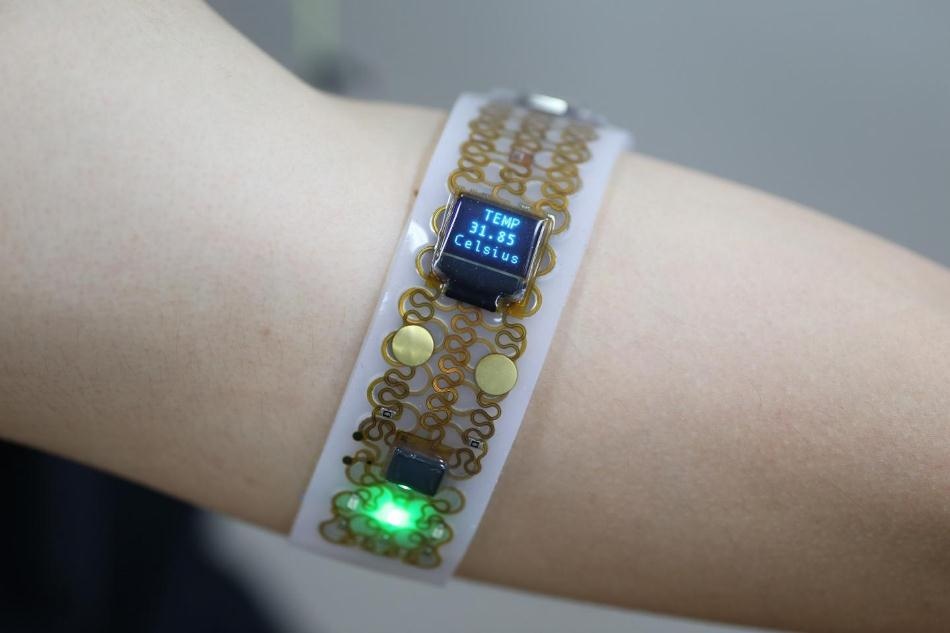Nov 5 2019
Visualize a handheld electronic device capable of softening and deforming when attached to the skin. This could very well be the future of electronics.
 Transformative electronics in soft mode, which becomes wearable for outdoor applications. (Image credit: KAIST)
Transformative electronics in soft mode, which becomes wearable for outdoor applications. (Image credit: KAIST)
A team of researchers from KAIST says their latest platform called “Transformative Electronics Systems” will pave the way to a new category of electronics, which will allow reconfigurable electronic interfaces to be enhanced for a range of applications.
The researchers working under Professor Jae-Woong Jeong from the School of Electrical Engineering at KAIST have invented a multifunctional electronic platform with the ability to mechanically change its flexibility, shape, and stretchability. This platform, described in Science Advances, enables users to effortlessly and precisely tweak its shape and stiffness.
This new class of electronics will not only offer robust, convenient interfaces for use in both tabletop or handheld setups, but also allow seamless integration with the skin when applied onto our bodies.
Jae-Woong Jeong, Professor, School of Electrical Engineering, KAIST
The transformative electronics comprise dedicated gallium metal structure, hermetically encapsulated and sealed inside a soft silicone material, integrated with electronics that are engineered to be flexible and stretchable. The mechanical transformation of the electronic systems is activated mainly by temperature change events manipulated by the user.
Gallium is an interesting key material. It is biocompatible, has high rigidity in solid form, and melts at a temperature comparable to the skin's temperature.
Sang-Hyuk Byun, Study Lead Author and Researcher, KAIST
As soon as the transformative electronic platform touches a human body, the gallium metal enclosed within the silicone transforms into a liquid state and softens the entire electronic structure, making it flexible, stretchable, and wearable. Then, the gallium metal hardens again after the structure is peeled off the skin, making the electronic circuits rigid and stable.
When flexible electronic circuits were combined into these transformative platforms, it endowed them with the capacity to become either stretchable and flexible or rigid.
This technology could not have been achieved without interdisciplinary efforts. We worked together with electrical, mechanical, and biomedical engineers, as well as material scientists and neuroscientists to make this breakthrough.
Joo Yong Sim, Study Co-Lead and Researcher, ETRI
This versatile electronics platform enabled scientists to showcase applications that were extremely adaptable and customizable such as a multi-purpose personal electronics with adjustable stretchability and stiffness, a neural probe that softens upon implantation into brain tissue, and a pressure sensor with tunable sensitivity and bandwidth.
This breakthrough can be applied for traditional and emerging electronic technologies, potentially redefining the consumer electronics sector, particularly in the robotic and biomedical fields. The scientists are certain that with more advancement, this innovative electronics technology can considerably influence the way electronics is used in everyday life.
Transformative Electronics Systems to Broaden Wearable Applications
A research team at KAIST says their new platform called “Transformative Electronics Systems” will open a new class of electronics, allowing reconfigurable electronic interfaces to be optimized for a variety of applications. (Video credit: KAIST)